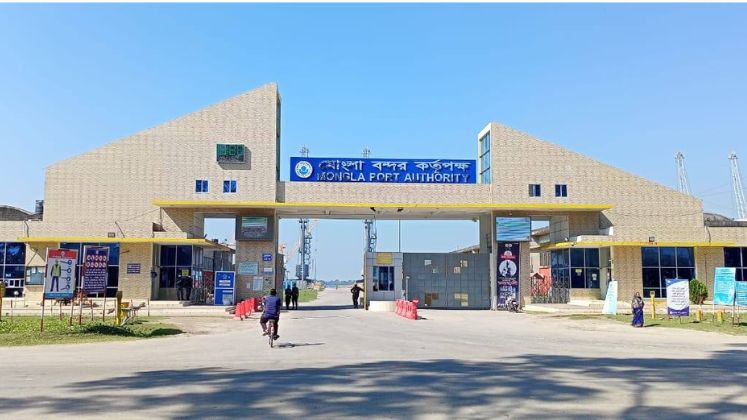
The Mongla Port Authority (MPA) has set an ambitious target of earning Taka 600 crore in revenue and handling more than 12 million tonnes of cargo in the 2025–26 fiscal year, strengthening its position as Bangladesh’s second-largest seaport.
MPA Deputy Director (Media) Md Makruzzaman said the port witnessed a record performance in FY2024–25, handling 10.4 million tonnes of cargo and generating Taka 343.33 crore in revenue. The port’s profit stood at Taka 62.1 crore, 203% higher than the projected Taka 20.5 crore.
Riding on this growth, the authority expects around 900 foreign commercial vessels to dock at Mongla this year. In just the first 48 days of FY 2025–26 (till 17th August), the port has already processed 10 lakh tonnes of cargo from 103 ships, including 5,332 TEUs of container cargo. In July alone, it handled 4,459 TEUs, 518 reconditioned vehicles, and 6.5 lakh tonnes of goods.
MPA Chairman Rear Admiral Shaheen Rahman said ongoing modernisation efforts, such as dredging of the approach channel, expansion of container terminals, and digitalisation of customs and operations—are accelerating Mongla’s transformation into a regional logistics hub.
He noted that the port’s full capacity would allow annual handling of 1,500 foreign vessels, 100,000 TEUs of containers, 20 million tonnes of cargo, and 20,000 reconditioned vehicles. “If we can reach these capacities, Mongla will not only enhance Bangladesh’s trade potential but also generate thousands of jobs in the Khulna-Bagerhat region,” he added.
Mongla’s importance is also growing as a transit gateway for India’s northeastern states and Bhutan under bilateral agreements. To maintain smooth operations, the authority has been engaging shipping agents, C&F agents, stevedores, and other stakeholders through regular meetings. An Internal Business Development Standing Committee has already helped boost vessel arrivals and trade activities.
With its strategic location and growing efficiency, Mongla is emerging as a vital alternative to Chattogram port, helping to ease congestion at the country’s busiest gateway while supporting balanced regional development.






